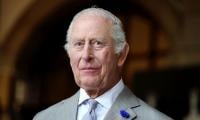Pakistan has had seven caretaker PMs till date
LAHORE: As over 240 million Pakistanis brace up to have their eighth Caretaker Premier in 23 years anytime soon to hold the reins of the country and oversee the forthcoming elections, research shows that the country has so far has 31 Prime Ministers, including seven Interim heads of government, since 1990.
The first-ever Caretaker Premier was a Pakistan People’s Party founding member, Ghulam Mustafa Jatoi. His tenure lasted between August 6, 1990 and November 6, 1990. Jatoi had supervised the 1990 ballot exercise, which had seen Nawaz Sharif come into power from 1990 to 1993.
The other six Interim Premiers were:
Mir Balakh Sher Mazari (18-04-1993 to 26-05-1993), Moin Qureshi (08-07-1993 to 19-10-1993), Malik Meraj Khalid (06-11-1996 to 17-02-1997), Muhammad Mian Soomro (16-11-2007 to 24-03-2008), Mir Hazar Khan Khoso (25-03-2013 to 05-06-2013) and Justice (Retd) Nasir-ul-Mulk (01-06-2018 to 18-08-2018).
It is imperative to note that before the introduction of the Presidential System in 1960, seven hand-picked or selected prime ministers had served between 1947 and October 1958, when the first Martial Law was proclaimed by Iskander Mirza.
These seven Premiers with tenure lengths in brackets were:
Liaquat Ali Khan (1,524 days between August 14, 1947 and October 16, 1951 or till the day of his assassination in Rawalpindi), Khawaja Nazimud Din (547 days), Mohammad Ali Bogra (847 days), Chaudhary Muhammad Ali (396 days), Hussein Shaheed Suharwardy (400 days) and Sir Feroze Khan Noon (295 days).
In 1971, the office of the Prime Minister was again revived, but had soon ceased to exist. Nurul Amin sat in the cozy office of the Prime Minister for only 13 days, the shortest tenure of any Pakistani Premier before or after him till date.
Executive powers and authority were given to the Prime Minister when the new Constitution was promulgated in 1973, but this office had again ceased to exist after General Ziaul Haq’s Martial Law in 1977.
During this period, Premier Zulfikar Ali Bhutto had served for 1,421 days. Yousaf Raza Gillani of PPP had called shots for 1,494 days or four years and 86 days.
Had the Supreme Court not mentioned explicitly in its order that Gillani was disqualified as Prime Minister with effect from April 26, 2012, he would then have been the longest-serving Pakistani Premier with a 1,547-day long tenure in a single term by beating Liaquat Ai Khan, who had reigned for 1,524 days. But it was not the case.
Overall, Nawaz Sharif---during his three non-consecutive terms between November 1990 and July 2017— served the country for 3,427 days or approximately nine years, four months and 22 days.
Benazir Bhutto had been Prime Minister for 1,725 days during her two tenures, Shaukat Aziz had bagged this honour for 1,183 days and Imran Khan wore the crown for 1,333 days. Here follow the tenure lengths of the remaining Pakistani Premiers:
Mir Zafarullah Jamali (581 days), Shujaat Hussain (57 days), Raja Pervez Ashraf (275 days) and Shahid Khaqan Abbasi (303 days).
The 1985 party-less ballot exercise was held under General Ziaul Haq, and Muhammad Khan Junejo was elected to lead the government. His tenure had lasted 1,161 days.
The 1988 elections, which were overseen by President Ghulam Ishaq Khan after General Zia’s plane crash in August of the same year, saw the resurgence of the Benazir Bhutto-led Pakistan People’s Party (PPP).
General Zia’s supporters, led by Nawaz Sharif, had reorganized themselves into a nine-party alliance, the Islami Jamhoori Ittehad (IJI).
The PPP emerged as the biggest party, winning 94 of the 207 seats in the National Assembly. The IJI came second with 56 seats amidst a voter turnout of just 43%.
This era had marked the beginning of a two-party system for about 11 years. The PPP was able to form a government with other left-wing parties, including the MQM.
The 2002 elections were held under the military government of General Pervez Musharraf. PPP and PML-N had several restrictions imposed on them and their leaders, Benazir Bhutto and Nawaz Sharif respectively, were in exile.
In order to address the restrictions, PPP created the Pakistan People Party Parliamentarians (PPPP) under the leadership of Makhdoom Amin Faheem.
The PML-N went through a dismantling process. And while one of its factions under Javed Hashmi remained loyal to Nawaz Sharif, the other faction broke away to form the King’s Party or the PML-Q with Mian Azhar and Chaudhries of Gujrat as its king-pins.
Although the PPPP received the most votes, the PML-Q won the most seats, winning 126. PPPP’s bagged 81 seats, Muttahida Majlis-e-Amal (MMA) returned victorious in 59 constituencies and PML-N could win 19 seats only.
More than 70 parties had contested these elections. Other known parties contesting at the national level included the six-party National Alliance led by former caretaker Prime Minister Ghulam Mustafa Jatoi, Imran Khan’s Pakistan Tehrik-i-Insaaf and Tahir-ul-Qadri’s Pakistan Awami Tehrik. Several regional parties, with strongholds in their own provinces included the Sindh-based Muttahida Qaumi Movement, Awami National Party, Jamhuri Watan Party, factions of Baluchistan National Movement and Pashtunkhwa Milli Awami Party.
-
 Europe Slams US Visa Bans
Europe Slams US Visa Bans -
 Sabrina Carpenter Shares Exciting Christmas Gift
Sabrina Carpenter Shares Exciting Christmas Gift -
 Prince Harry Shares Close Bond With Meghan Markle’s Mom
Prince Harry Shares Close Bond With Meghan Markle’s Mom -
 Andrew Mountbatten-Windsor And Sarah Would Be Throwing One Last Party, Says Royal Author
Andrew Mountbatten-Windsor And Sarah Would Be Throwing One Last Party, Says Royal Author -
 Luke Evans Reflects On Latest 'Broadway' Gig
Luke Evans Reflects On Latest 'Broadway' Gig -
 Kylie Kelce Presses Travis Kelce About Big Taylor Swift Claim
Kylie Kelce Presses Travis Kelce About Big Taylor Swift Claim -
 Daniel Curtis Lee Wins Hearts With Act Of Kindness Toward Tylor Chase
Daniel Curtis Lee Wins Hearts With Act Of Kindness Toward Tylor Chase -
 Paul Rudd, Jack Black Reveal BTS Struggles From 'Anaconda' Set
Paul Rudd, Jack Black Reveal BTS Struggles From 'Anaconda' Set -
 Kings Charles' 'relatable' Cancer Journey Changes Lives Of Thousands: Expert
Kings Charles' 'relatable' Cancer Journey Changes Lives Of Thousands: Expert -
 Amanda Seyfried Reveals What She Missed In American History Classes
Amanda Seyfried Reveals What She Missed In American History Classes -
 Venus Williams Recalls Falling In Love With Husband Andrea Preti
Venus Williams Recalls Falling In Love With Husband Andrea Preti -
 Luke Evans On Broadway Debut: 'I Always Wanted To Do Broadway'
Luke Evans On Broadway Debut: 'I Always Wanted To Do Broadway' -
 King Charles Faces New Challenge From Political Leader On Christmas Day
King Charles Faces New Challenge From Political Leader On Christmas Day -
 Zooey Deschanel Shares If She Would Rewatch Iconic Holiday Film
Zooey Deschanel Shares If She Would Rewatch Iconic Holiday Film -
 Liza Minnelli 'terrified' Of Looking Fragile As Wheelchair Threatens 'legacy': Report
Liza Minnelli 'terrified' Of Looking Fragile As Wheelchair Threatens 'legacy': Report -
 'Dhurandhar' Announces Release Date For Sequel
'Dhurandhar' Announces Release Date For Sequel



